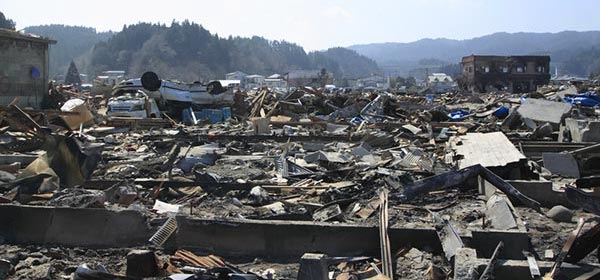Recent natural disasters have devastated countries, killing hundreds, destroying entire cities and infrastructure, and deterring millions of tourists from travelling. Unfortunately, many of the affected countries’ economies desperately rely on the tourism dollar. To help assuage or confirm your fear of travelling to certain countries, telegraphtravel – using data from the United Nations University for Environment and Human Security’s (UNU-EHS) 2015 WorldRiskReport – has developed a map using the Carto platform that shows where a natural disaster is most likely to strike.
According to the report, of the 171 countries included in the WorldRiskIndex, the island paradise of Vanuatu is most likely to be hit by natural disaster, with a risk factor of 36.72. Tonga comes in second with a risk factor of 28.45, followed by the Philippines with 27.98.
If you look closely at the map, you’ll see that the high-risk hotspots are located in Oceania, Southeast Asia, Central America, and the Southern Sahel in Africa. Six of the top 20 high-risk countries are island nations that are particularly exposed to cyclones, sea-level rise, tsunamis and floods.
Recent earthquakes in Italy may have taken some by surprise, but of the European countries in the report, Italy’s disaster risk rating is relatively moderate in the rankings at 4.88, surpassed by Turkey (5.52), Greece (7.36), Serbia (7.53), The Netherlands (8.76) and Albania (10.01).
Situated in the hotbed of war that is the Middle East, Qatar (0.1) is actually rated as the safest country in the world – at least from natural disasters. The tiny island fortress of Malta comes in second at 0.61 and Barbados in third at 1.16.
Australia is a relatively risk-free 4.51, with bushfires, floods, severe storms, earthquakes and landslides being our biggest natural threats.

Countries appearing in grey were not included in the study. Below are the top 20 safest, and least safe countries from natural disaster:
The 20 safest countries
- Qatar – 0.1 per cent
- Malta – 0.61 per cent
- Barbados – 1.16 per cent
- Saudi Arabia – 1.32 per cent
- Grenada – 1.44 per cent
- Iceland – 1.55 per cent
- Kiribati – 1.78 per cent
- Bahrain – 1.81 per cent
- United Arab Emirates – 2.1 per cent
- Sweden – 2.26 per cent
- Finland – 2.28 per cent
- Egypt – 2.34 per cent
- Norway – 3.35 per cent
- Israel – 2.49 per cent
- Singapore – 2.49 per cent
- Estonia – 2.52 per cent
- Seychelles – 2.58 per cent
- Switzerland – 2.61 per cent
- Luxembourg – 2.68 per cent
- Oman – 2.74 per cent
The 20 least safe
- Vanuatu – 36.43 per cent
- Tonga – 28.23 per cent
- Philippines – 27.52 per cent
- Guatemala – 20.88 per cent
- Bangladesh – 19.81 per cent
- Solomon Islands – 18.11 per cent
- Costa Rica – 16.94 per cent
- Cambodia – 16.9 per cent
- El Salvador – 16.85 per cent
- Timor-Leste – 16.37 per cent
- Papua New Guinea – 15.9 per cent
- Brunei Darussalam – 15.58 per cent
- Mauritius – 15.18 per cent
- Nicaragua – 14.89 per cent
- Japan – 14.1 per cent
- Fiji – 13.56 per cent
- Guinea-Bissau – 13.09 per cent
- Vietnam – 12.81 per cent
- Chile – 12.28 per cent
- Jamaica – 12.15 per cent
Read the 2015 WorldRiskReport fact sheet
Are you planning to travel to any of these countries? What are your contingency plans? Would the results of this report, or the map, change your mind?
Related articles:
Is it safe to travel to Italy?
Safe cities for solo female travellers
Is it safe to travel to Fiji?

